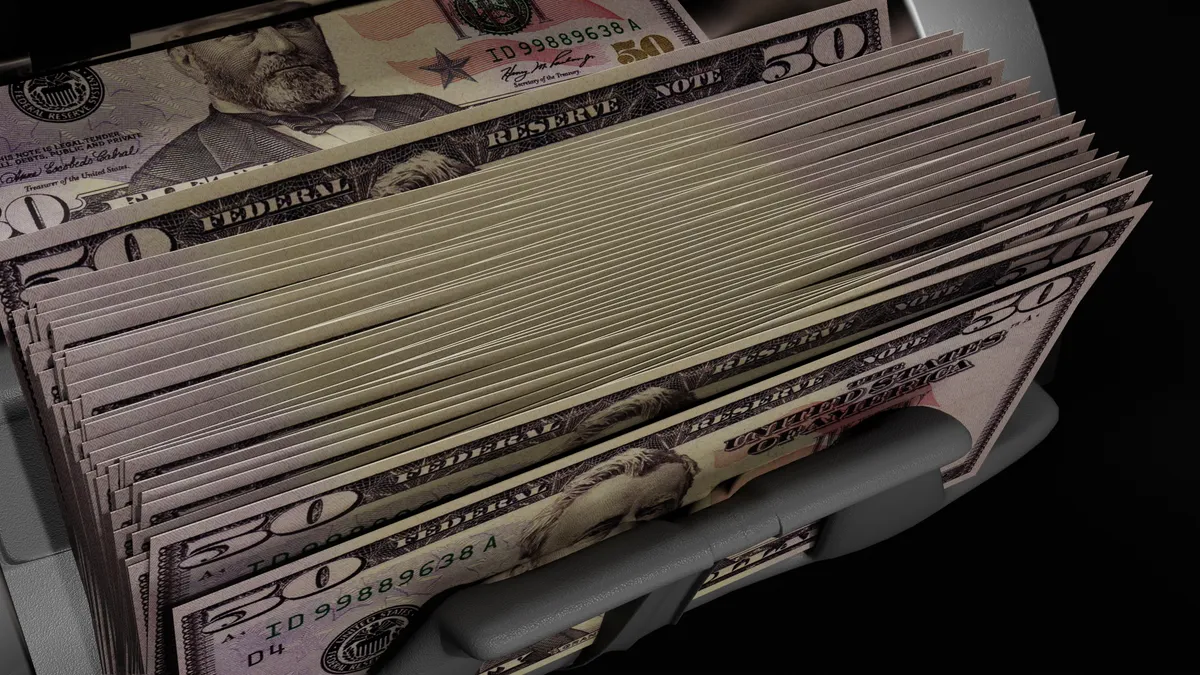Dive Brief:
- After quickening during the first quarter, inflation will probably slow for the remainder of this year and ease near the Federal Reserve’s 2% goal during 2025, economists said in a Wolters Kluwer survey released Friday.
- Economists from companies ranging from Goldman Sachs to Ford Motor and Eaton Corp to Wells Fargo expect “the Q1 pickup in inflation will be short-lived, with PCE [personal consumption expenditures] price inflation slowing through the remainder of this year and settling close to the Fed’s 2% target throughout 2025,” Wolters Kluwer said, referring to the consensus outlook.
- The Fed’s most aggressive monetary tightening in four decades has yet to fully restrain the economy, according to 73% of survey respondents. “So, there is more restraint to come even if the FFR [federal funds rate] remains unchanged” at a 23-year-high between 5.25% and 5.5%, Wolters Kluwer said.
Dive Insight:
The forecast that price pressures will fall aligns with a 13% decline in consumer sentiment this month after three months of little change as measured by a University of Michigan survey. Spending by consumers fuels roughly 70% of economic growth.
“While consumers had been reserving judgment for the past few months, they now perceive negative developments on a number of dimensions,” the university’s Consumers Surveys Director Joanne Hsu said Friday in a statement, noting that sentiment fell to a six-month low.
Consumers “expressed worries that inflation, unemployment and interest rates may all be moving in an unfavorable direction in the year ahead,” she said.
Consumers disagree with Wolters Kluwer poll respondents on the outlook for prices, expecting 3.5% inflation in the coming 12 months compared with the 3.2% rate they forecast last month, the university found in its survey.
Inflation expectations loom large when Fed officials mull a change to monetary policy.
Faster inflation for both consumers and producers so far this year has compelled policymakers to say they need more confidence that price pressures are sustainably falling before trimming the main interest rate.
“It is of utmost importance that we maintain credibility in pursuing our fight against inflation by proceeding carefully and deliberately to achieve our 2% goal,” Fed Governor Michelle Bowman said in a speech Friday.
Echoing comments by Fed Chair Jerome Powell on May 1, several policymakers have said the central bank may need to keep borrowing costs higher than earlier expected.
“The recent upward surprises to activity and inflation suggest the likely need to keep policy at the current level until we have greater confidence that inflation is moving sustainably toward 2%,” Boston Fed President Susan Collins said Wednesday.
“The recent data lead me to believe this will take more time than previously thought,” Collins said.
Minneapolis Fed President Neel Kashkari on Tuesday voiced a similar view.
“While we saw rapid disinflation in the second half of 2023, that progress appears to have stalled in the most recent quarter,” Kashkari said in an essay.
“The question we now face is whether the disinflationary process is in fact still underway, merely taking longer than expected, or if inflation is instead settling to around a 3% level, suggesting that the FOMC [Federal Open Market Committee] has more work to do to achieve our dual mandate goals.”
New York Fed President John Williams and San Francisco Fed Mary Daly both said they see the need for more time before altering the benchmark interest rate.
Although persistent, inflation shows no sign of holding at its current level, Chicago Fed President Austan Goolsbee said Friday.
“There isn't at this time, much evidence, in my view, that inflation is stalling out at 3%,” he said.
The central bank will probably not cut the main rate until September, according to respondents to the Wolters Kluwer poll. They expect a second quarter-point reduction by the end of 2024.
Gross domestic product will likely grow 2.4% this year, according to the median forecast by the economists.















